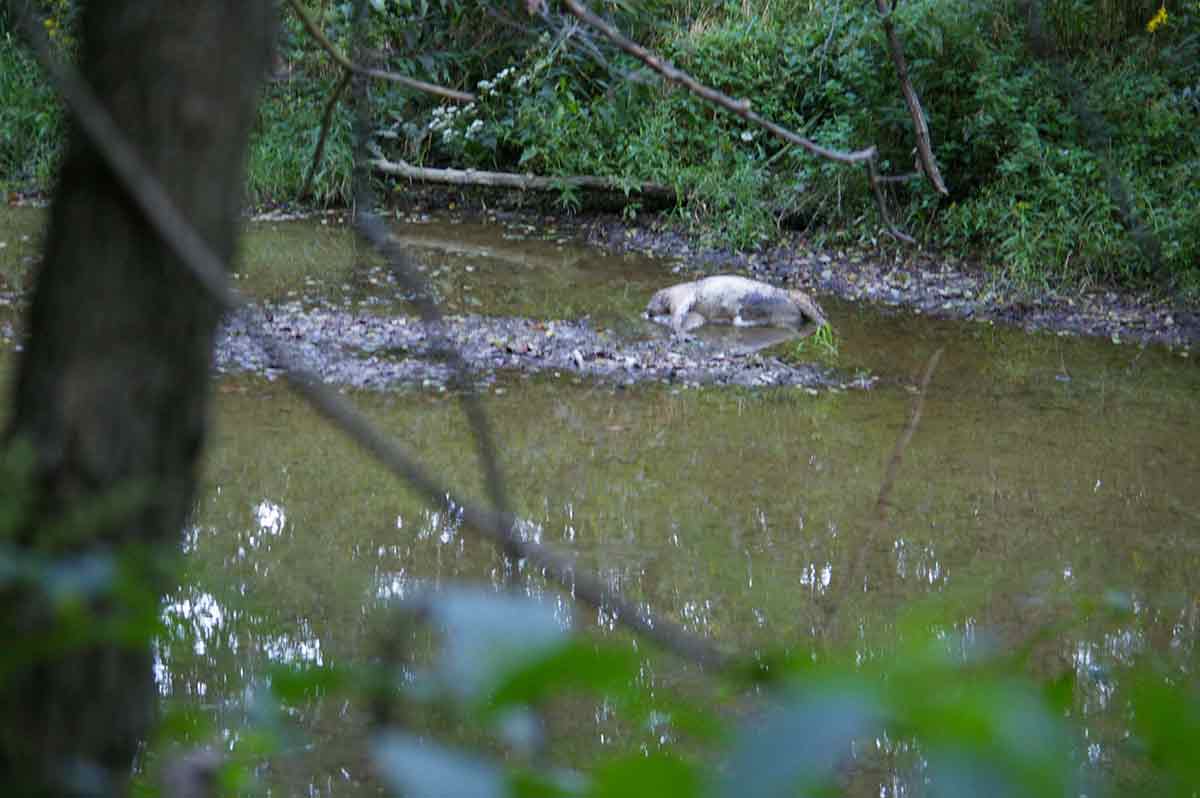
Deer that die as a result of EHD are often found near water.
Bob Frye/Everybody Adventures
If the bodies are going to pile up because of an EHD outbreak, this is the month it will happen.
It’s all a matter of timing.
Pennsylvania Game Commission officials confirmed that EHD, or epizootic hemorrhagic disease, is killing deer in western Pennsylvania. As of late August, roughly 450 deer – largely in Allegheny, Beaver and Washington counties – had been reported or found by the agency.
That total will almost assuredly grow, though, said Justin Brown, wildlife veterinarian for the agency. And it will happen soon.
It’s not that there’s anything special about September, Brown said.
“It’s just that there’s a little bit of a lag factor as the disease gets going,” he said.
The midges that infect deer, causing their deaths within five to 15 days, usually show up in August, Brown said. Deer start dieing almost immediately.
But it’s not until September that things really gets going and becomes noticeable, he said.
Pennsylvania is not alone in seeing the disease this summer. Reports have come in from a number of other states, from Tennessee, Kentucky and Ohio to Virginia and West Virginia.
Nowhere is it as bad as it was in 2007 – the worst outbreak in history on a national scale – or 2011, Brown said.
But is does appear to be spreading.
Pat Snickles, information and education supervisor in the Game Commission’s southwest region office, said EHD was confined to three counties as of the last week of August, with the area where Allegheny, Beaver and Washington come together the real hot spot.
Test results are pending from deer a couple of other places, though, including Lawrence and Erie counties.
And since those were submitted, hunters have reported finding dead deer – presumably from EHD — in Greene County, too.
That’s going to prove costly.
The commission is no longer testing deer from the three counties where the disease was first found, given its confirmed presence, Snickles said.
“But if deer are found in other areas, or other townships, where it hasn’t been before, or if an officer finds a deer that he deems suspicious enough to be worthy of testing, they’ll be tested,” he said.
There’s really nothing anyone can do otherwise, Brown said. It’s “pretty close to impossible” to treat for EHD on a landscape scale, he said.
There are a whole host of midges in the environment. Which ones cause the disease, and what causes them to impact deer one year and not the next, is not entirely clear.
“There’s a lot we don’t know about what drives these outbreaks,” he said.
They don’t necessarily lead to big population declines, at least on a landscape level, he said. But hunters in specific locales where the disease is worst can notice a drop for a while.
“Fortunately, it’s only temporary,” Brown said. “The deer tend to bounce back pretty quickly. But for certain, the season after a bad outbreak, hunters will see fewer deer.”
The disease goes away only when the midges that carry it do, he added. That will occur only with the first hard frost.
Snickles said that can’t come soon enough.
“The sooner we get a killing frost, the better of we’ll be,” he said.
Report suspected EHD
If you think you’ve come across a deer with EHD, report that to the nearest Game Commission office. A director of numbers is available on its site.








